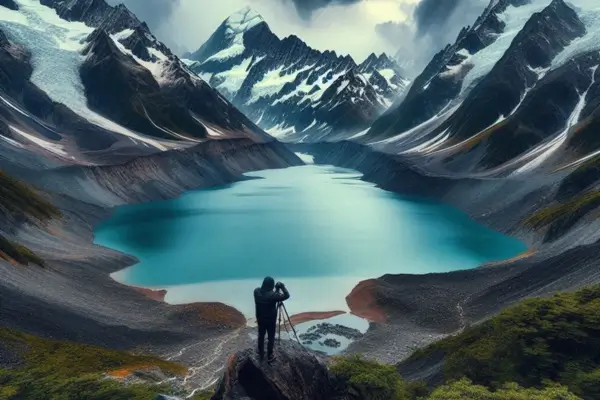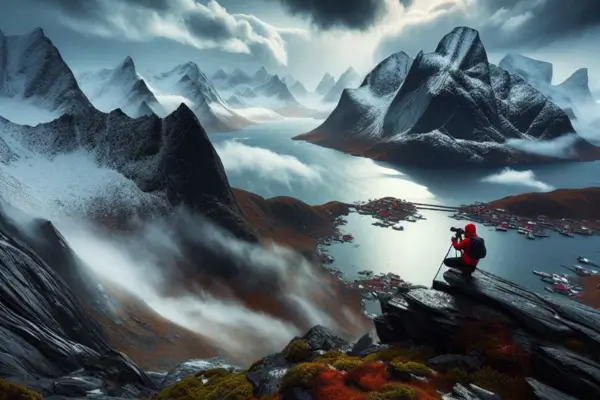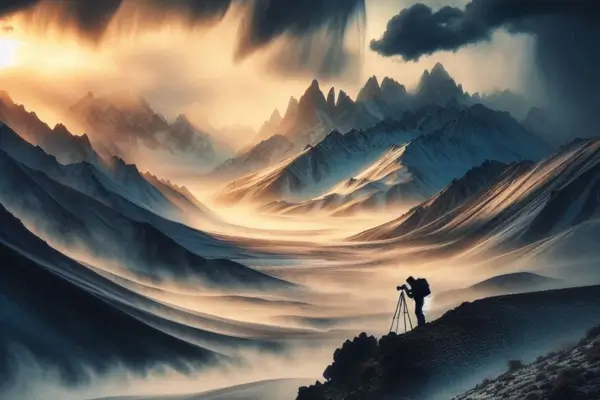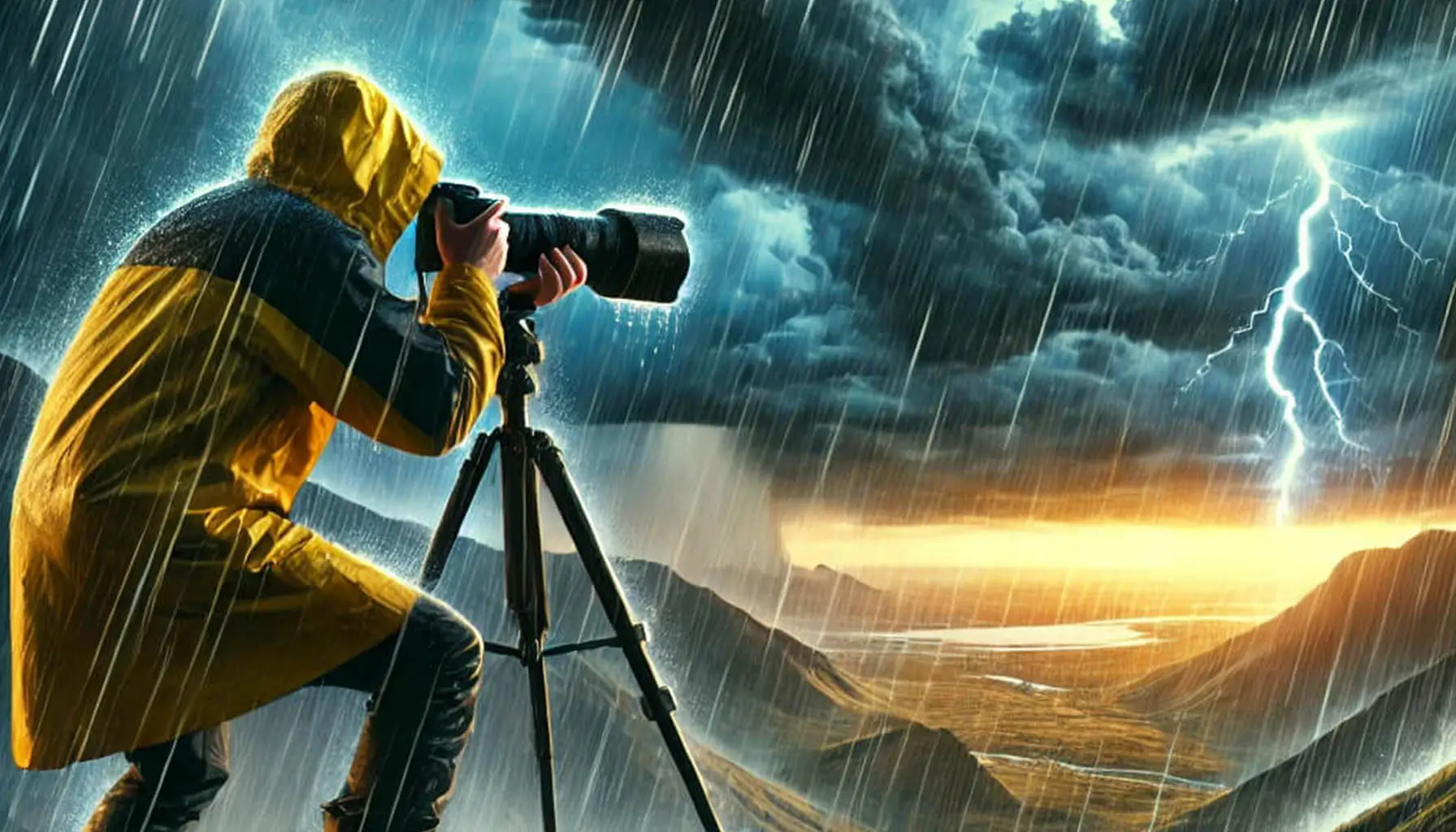Photography in extreme weather conditions offers a chance to capture breathtaking and truly unique images. From dramatic storm clouds to glistening frost on a winter morning, nature’s extremes can transform ordinary scenes into extraordinary works of art. The unpredictability of these moments adds an element of excitement and creativity, allowing photographers to tell powerful stories through their lenses.
However, photographing in challenging weather is not without its risks. Preparation and safety are paramount to ensure both the photographer and their equipment remain protected. Whether you’re battling freezing temperatures, heavy rain, or scorching heat, taking the time to plan your shoot and understand the conditions can make all the difference. By equipping yourself with the right knowledge and tools, you can not only safeguard your well-being but also elevate your photography to new heights. Extreme weather may test your limits, but with preparation, it can also showcase your resilience and artistry.
Understanding the Challenges of Extreme Weather
Photographing in extreme weather can be both thrilling and daunting. Each type of condition presents unique challenges that can impact your equipment, creativity, and safety. Understanding these hurdles is the first step toward mastering photography in these environments.
Common Issues Photographers Face in Extreme Weather
1. Freezing Temperatures
Cold weather can be particularly harsh on both photographers and their equipment. Batteries drain faster, camera mechanisms may freeze, and condensation can occur when transitioning between cold and warm environments. Additionally, numb fingers can make handling delicate camera controls more difficult.
2. Intense Heat
High temperatures pose risks such as overheating camera bodies and lenses, especially if exposed to direct sunlight for long periods. Heatwaves can also create visual distortions in images due to rising air currents, and sweat can make it uncomfortable to carry and operate gear.
3. Heavy Rain or Snow
Wet conditions can damage non-weather-sealed equipment, fog up lenses, or create water spots on your images. Snow presents a unique challenge by reflecting light, which can confuse your camera’s metering system and lead to incorrect exposures. Rain, while dramatic, demands extra precautions to keep your gear and yourself dry.
4. High Winds
Strong winds can make it difficult to keep your camera stable, even on a tripod. Fine particles like sand or dust can get into your gear, potentially causing lasting damage. Moreover, wind chill in cold climates can intensify discomfort and reduce shooting time.
How These Conditions Impact Equipment and Shooting Techniques
Each of these weather challenges demands adjustments to your usual photography routine. Cold and heat may require you to manage your camera’s performance, while rain and snow necessitate protective measures to shield your gear. Windy conditions might push you to experiment with faster shutter speeds or weighted tripods to maintain stability.
By anticipating these challenges, you can better prepare for the unexpected and ensure that your focus remains on capturing the beauty of extreme weather rather than dealing with avoidable setbacks.

Preparing for the Shoot
When photographing in extreme weather conditions, preparation is the key to success. Not only does it help ensure your safety, but it also increases your chances of capturing stunning images despite the challenges.
Research the Location and Weather Forecast
Before heading out, thoroughly research your destination. Understanding the terrain and expected weather conditions allows you to anticipate challenges and plan accordingly. Use reliable weather forecasting tools to stay updated on sudden changes, and always have a backup plan in case conditions become too dangerous to shoot.
Essential Gear for Extreme Weather Photography
Equipping yourself with the right gear is crucial for both your safety and the protection of your equipment:
- Weather-Sealed Cameras and Lenses: These are designed to resist moisture, dust, and extreme temperatures, making them ideal for unpredictable environments.
- Protective Coverings for Equipment: Rain sleeves, lens hoods, and camera bags with waterproof features can shield your gear from rain, snow, or intense sunlight.
- Tripod for Stability: A sturdy tripod can help stabilize your camera in windy conditions or uneven terrains, ensuring sharp and steady shots.
Importance of Dressing Appropriately
Dressing for the weather is just as important as preparing your gear. The right clothing can keep you comfortable and focused on your photography:
- Layering for Cold Weather: Wear multiple layers that you can adjust as needed. Thermal base layers, insulated jackets, and windproof outer layers are essential for staying warm and protected in freezing temperatures.
- Lightweight, Breathable Fabrics for Heat: In hot climates, choose clothing made from moisture-wicking, breathable materials to stay cool and prevent overheating. A wide-brimmed hat and sunscreen are also essential to protect against the sun.
- Waterproof Clothing and Boots for Wet Conditions: Rain jackets, waterproof pants, and sturdy boots with good traction will keep you dry and comfortable when shooting in wet or muddy environments.
Proper preparation not only makes the experience of shooting in extreme weather more manageable but also allows you to focus on creativity and capturing the unique beauty of these challenging conditions.

Techniques for Capturing Stunning Photos in Extreme Weather
Photographing in extreme weather conditions requires more than just technical skills—it demands adaptability and creativity. Here are some essential techniques to help you capture breathtaking images in challenging environments:
Adjusting Settings for Different Conditions
- Exposure Compensation in Snow or Bright Light
Snow and bright sunlight can often confuse your camera’s metering system, resulting in underexposed images. Use positive exposure compensation to brighten the scene and retain the natural brilliance of snow or bright highlights without losing details. - Using Fast Shutter Speeds for Wind or Rain
To freeze motion in windy or rainy conditions, opt for a fast shutter speed. This is particularly effective for capturing individual raindrops, flying debris, or waves crashing against rocks. A fast shutter also minimizes camera shake caused by strong winds. - ISO Considerations in Low Light
Extreme weather often brings dim lighting, such as stormy skies or twilight snowstorms. Increase the ISO setting to maintain a proper exposure without slowing down the shutter speed too much. Modern cameras handle higher ISOs well, but always balance ISO with noise reduction during post-processing.
Creative Compositions
- Incorporating Dramatic Skies or Storm Elements
Storms and turbulent weather offer dramatic skies that can add intensity to your photos. Use wide-angle lenses to capture the grandeur of dark clouds, lightning bolts, or swirling dust. Including these elements as part of your composition enhances the emotional impact of the image. - Using Reflections in Water or Ice
Puddles, icy surfaces, or calm water can create stunning reflections that amplify the mood of the weather. Look for unique angles to capture mirrored clouds, raindrops, or frozen patterns in ice for an artistic touch. - Leveraging Natural Elements to Enhance Storytelling
Extreme weather naturally tells a story. Highlight elements like a lone tree bending in the wind, footprints in fresh snow, or a person huddled against the rain. These details provide context and help convey the mood and intensity of the moment.
By mastering these techniques, you can transform adverse weather conditions into opportunities for truly remarkable photography. Experiment with your camera settings and compositions to find what works best for each situation, and don’t shy away from letting the weather guide your creative vision.

Protecting Your Equipment and Yourself
Photographing in extreme weather conditions can yield breathtaking results, but it also comes with risks to both your gear and your personal safety. Taking the proper precautions ensures that your equipment stays in working order and that you remain safe throughout the process.
Tips for Keeping Gear Safe
- Using Silica Gel Packs to Prevent Condensation
Extreme weather often causes sudden changes in temperature, leading to condensation on your equipment. Place silica gel packs in your camera bag to absorb moisture and keep your gear dry. This is especially important when transitioning from cold to warm environments. - Cleaning and Drying Equipment After the Shoot
After finishing your shoot, inspect your gear thoroughly for water, dirt, or ice. Use a soft cloth to gently wipe down the camera and lenses, and allow them to air dry before storing. For saltwater environments, ensure any salt residue is removed as it can corrode your equipment over time.
Personal Safety Tips
- Knowing When to Step Back to Avoid Dangerous Situations
No photograph is worth putting your life at risk. Be mindful of your surroundings and recognize warning signs, such as approaching storms, unstable ground, or rising water levels. Always have an exit plan and prioritize your safety over capturing the perfect shot. - Staying Hydrated and Nourished
Extreme weather can take a toll on your body. Whether you’re braving scorching heat or freezing cold, staying hydrated is essential. Pack enough water and snacks to maintain your energy levels throughout the shoot. For cold climates, warm beverages can also help keep your body temperature regulated.
By prioritizing the protection of your equipment and yourself, you’ll be better prepared to tackle the challenges of extreme weather photography while ensuring a successful and enjoyable experience.
Post-Processing Tips for Extreme Weather Photography
Post-processing is a crucial step in transforming your extreme weather photographs into compelling works of art. Here are some effective techniques to enhance your images and bring out the unique mood and drama of the captured scene:
Enhancing Colors and Contrast to Highlight Weather Effects
Extreme weather often creates striking natural effects, such as vibrant sunsets after storms or the cool, muted tones of a snowy landscape. Use editing tools to:
- Boost Saturation and Vibrance: Highlight the colors of dramatic skies or enhance the subtle hues of snow and rain.
- Increase Contrast: Make the details pop, especially in cloudy or foggy conditions where elements can appear flat.
- Selective Color Adjustments: Focus on enhancing specific colors to draw attention to key areas, like rich greens after rain or golden tones during sunrise.
Removing Lens Spots Caused by Rain or Snow
Weather conditions can often lead to water droplets or snowflakes landing on your lens, creating distracting spots in your image. Here’s how to fix them:
- Spot Healing Brush or Clone Tool: In software like Adobe Lightroom or Photoshop, use these tools to seamlessly remove blemishes from the image.
- Use Layer Masks: When editing in Photoshop, layer masks can help maintain the natural look of the surrounding areas while removing unwanted spots.
- Plan for Prevention: Always carry a microfiber cloth and lens cleaning solution to minimize spots before they become a post-processing headache.
Emphasizing Mood with Light and Shadow Adjustments
Extreme weather often evokes powerful emotions. You can amplify these feelings by carefully working with light and shadow:
- Adjust Highlights and Shadows: Enhance the depth of stormy clouds or the glow of sunlight breaking through them.
- Use Gradient Filters: Add subtle gradients to darken skies or brighten foregrounds, creating a balanced yet dramatic effect.
- Experiment with Dodge and Burn Tools: Lighten or darken specific areas to direct the viewer’s eye and accentuate the drama of the scene.
By applying these techniques, you can turn your extreme weather photographs into vivid, emotionally resonant images that capture the awe-inspiring power of nature. Post-processing not only refines your work but also helps tell the story you envisioned while capturing the scene.

Inspiring Examples of Extreme Weather Photography
Extreme weather photography has produced some of the most awe-inspiring images, showcasing the raw power and beauty of nature. Here are a few iconic examples and insights into the techniques used by professional photographers:
1. Storm Chasing in the Midwest
Photographers like Mitch Dobrowner have captured breathtaking images of supercell storms in the American Midwest. These photos often feature dramatic cloud formations, lightning strikes, and vast open landscapes.
Technique:
- Gear: Weather-sealed cameras and wide-angle lenses to capture the full scope of the storm.
- Settings: Long exposures to emphasize lightning bolts and movement in the clouds.
- Approach: Safety first—maintaining a safe distance and working with experienced storm chasers.
2. Arctic Ice and Snowscapes
Paul Nicklen, a renowned National Geographic photographer, has taken stunning images of icy landscapes and wildlife in polar regions. His work often highlights the serene beauty of glaciers and the stark contrast between snow and sky.
Technique:
- Gear: Insulated camera housings to prevent freezing and condensation.
- Settings: High ISO for low-light conditions and exposure compensation to avoid overexposing bright snow.
- Approach: Patience and endurance in extreme cold to wait for the perfect light and composition.
3. Desert Heat and Sandstorms
Images of swirling sandstorms and sunlit dunes, like those taken by George Steinmetz, illustrate the harsh yet captivating beauty of deserts.
Technique:
- Gear: Protective filters and covers to shield lenses from sand.
- Settings: Fast shutter speeds to freeze motion in sandstorms and telephoto lenses to capture distant subjects.
- Approach: Timing the shoot during golden hours to highlight textures and shadows on the dunes.
4. Volcanic Eruptions
Volcanic photography, as seen in the works of Carsten Peter, captures the fiery power of Earth’s eruptions. Images of molten lava flows and glowing craters are both mesmerizing and intimidating.
Technique:
- Gear: Heat-resistant equipment and long telephoto lenses to shoot from a safe distance.
- Settings: Low ISO and controlled exposure to balance the bright lava against darker surroundings.
- Approach: Extensive research and collaboration with geologists to ensure safety while getting close enough for impactful shots.
Takeaway for Aspiring Photographers
These professionals not only master their craft but also prioritize preparation, safety, and an eye for storytelling. By studying their work and techniques, you can find inspiration to push your creative boundaries while respecting the power of nature.
Conclusion
Photographing in extreme weather conditions can be both challenging and rewarding. By preparing thoroughly, ensuring your safety, and embracing creativity, you can capture stunning images that truly stand out. Whether it’s the dynamic energy of a storm, the serene beauty of a snowy landscape, or the golden hues of a desert sunset, extreme weather offers endless opportunities to tell unique and compelling stories through your lens.
Remember, preparation is key—knowing your environment, protecting your gear, and dressing appropriately are essential for a successful shoot. At the same time, staying safe should always be your top priority. Never take unnecessary risks, and always be mindful of your surroundings.
Finally, don’t be afraid to step out of your comfort zone. Experiment with new techniques, embrace the unpredictability of nature, and let your creativity flow. Some of the most unforgettable photographs are born from moments when photographers dared to take on the elements.
So grab your camera, venture into the great outdoors, and let extreme weather inspire your next masterpiece!
